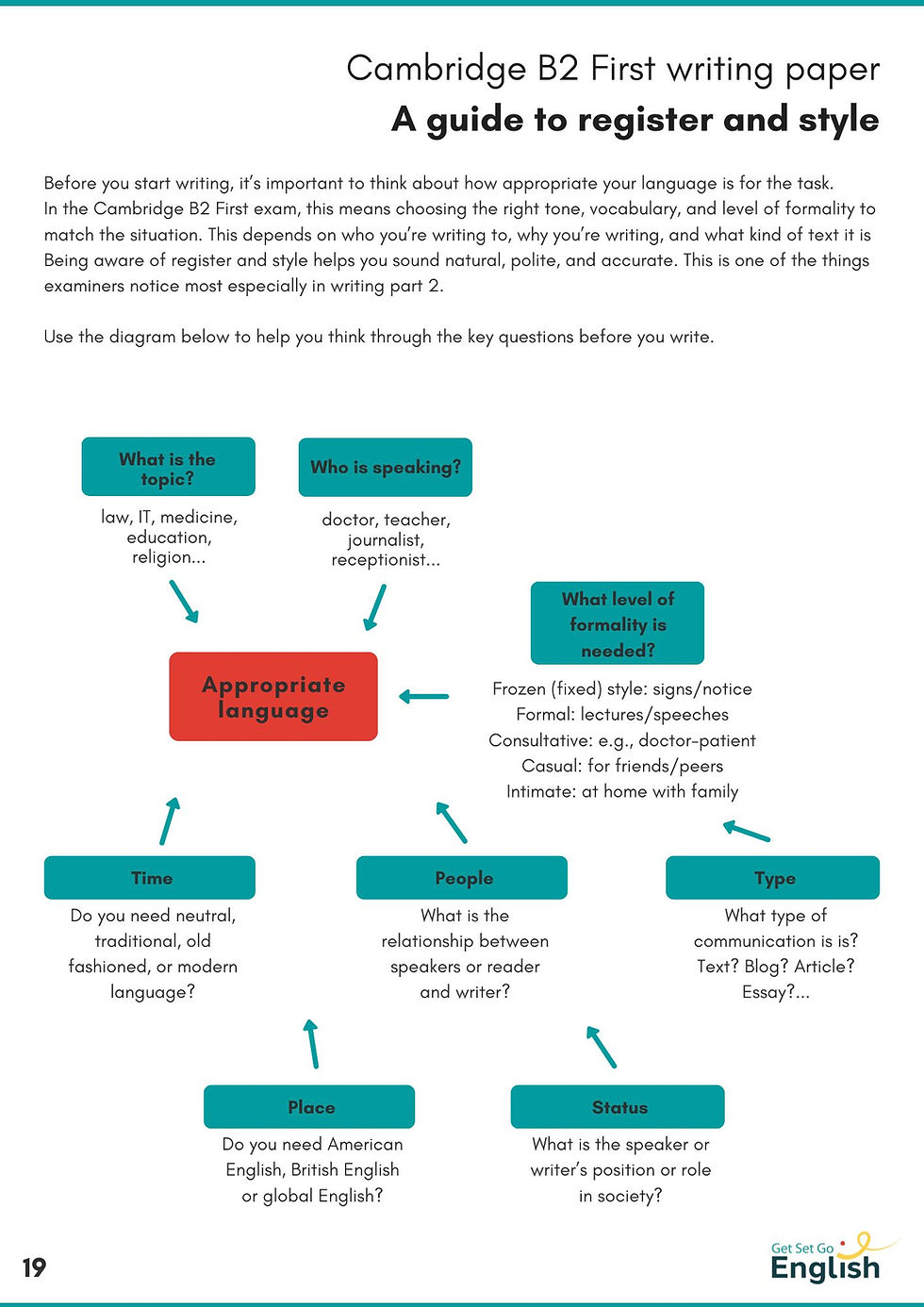Writing made simple - Cambridge B2 First
- Catherine Jones

- Jul 25
- 3 min read
Updated: Aug 6
Are you preparing for the Cambridge B2 First writing exam? This guide is for you. If you're working on writing skills for any other reason, it’s also for you.
Writing might feel like a big task at first, but if you take it step by step, it becomes much easier. This guide will help you through the whole writing process so you can feel confident and in control. You’ll find out how to plan, write, and check your work so your ideas are clear and well organised. Take your time with each step. Use what you know, follow the structure, and aim to do your best. The more you practise, the more your writing will improve. You’ve got this!
Step 1 - Think!
Before you start, read the question or prompt carefully and try to understand the task. Make sure you are clear about the purpose of the task and who your reader is - this will help you choose language that is appropriate.
Is it an essay, a report, an article, a review, an email or a letter? Is it formal or informal? Think carefully about register and style!

Step 2 - Brainstorm
Brainstorm your ideas with a mind map, list, comparison chart or whatever works best for you and is most appropriate for the task in front of you. Don’t spend too long on this. Try to decide on a few key points.
Step 3 - Planning
Organise your ideas into a few key points and think about the structure of your writing. Some tasks will require a title. Plan your paragraphs - introduction, 2-3 paragraphs in the main body and a solid conclusion.
Remember! A paragraph is a collection of sentences on a similar theme.
Step 3 - Draft your writing
Introduction
Start by paraphrasing the question or prompt. (Paraphrasing = using different words for a similar meaning).
Depending on the task, answer the question or make an overall statement about the prompt.
Tell the reader what you’re going to tell them.
Main Body
Introduce each paragraph with a clear ‘topic sentence’ – one which leads in and makes an overall statement about what you want to say.
Use linking language to help your sentences flow within the paragraph and paragraphs flow within the text.
Use the ‘PEE’ formula – Make a Point - give an Example – Expand or explain your point further.
Conclusion
Summarise your report and recap what you’ve said.
Tell your reader what you have told them.
General Tips
Try to use a range of language and a range of different sentence types: simple, compound, and complex.
Use linking language to make sentences flow within the paragraph and paragraphs flow within the text.
Use my ‘linkers’ reference page for a range of options to help your text flow. Email me for a copy if you haven’t already got a copy.
Step 5 - Check
Check for spelling errors and correct punctuation in every sentence.
Make sure your handwriting is clear and easy to read.
Make sure you have used a mix of simple, compound, and complex sentences.
Each paragraph should have one clear idea and flow smoothly into the next.
Make sure your facts are correct and support your points.
Your introduction should explain the purpose. Your conclusion should repeat your main point clearly.
Tip: Reading aloud helps you hear mistakes or unclear parts.
Writing well takes practice, but with the right steps and tools, it gets easier over time. Use this guide each time you write to build strong habits and improve your confidence.
One more thing - don’t be afraid to ask for help when you need it.
Would you like to learn more about how to write an article, report, review, essay, letter or email? You can download a guide to all of these in my resources area. You'll learn about each type - the style, tone, what to include and what not to include. There's also a marking criteria to really help you impress the examiner and there's a list of useful language that you can use for each writing type. Plus, there are practice questions for you when you're ready.




Comments